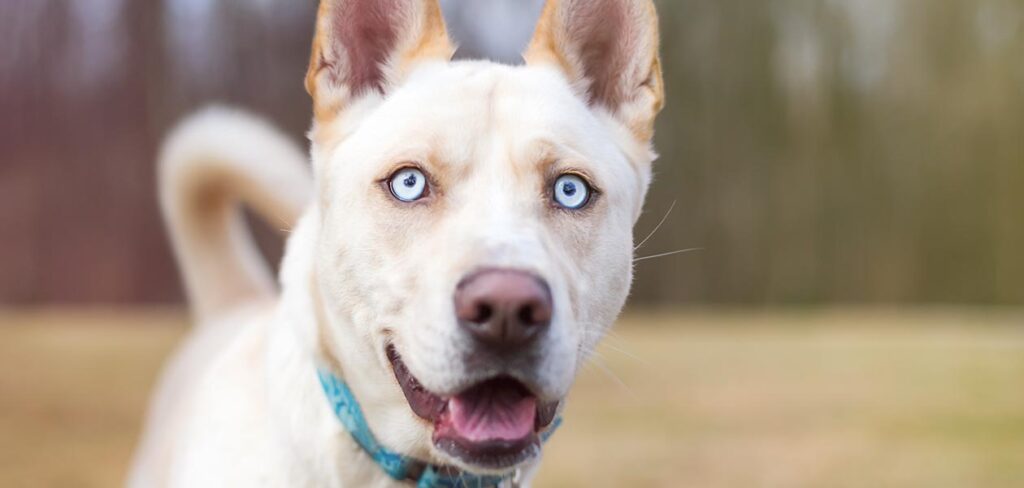
Cream colored dogs are rather unusual.
The AKC recognizes 195 dog breeds on their registry, and a further 70 breeds in their Foundation Stock Service.
And yet surprisingly few of these canines come in cream.
So if you’re looking for a dog whose shed fur blends perfectly with your carpet, let us help you narrow down your choices!
Cream Dogs
Here are fifteen of the best dog breeds that do come in cream coats:
- Golden Retriever
- Labrador Retriever
- Poodles
- Dachshund
- Chihuahua
- Pomeranian
- American Pitbull Terrier
- Bichon Frise
- Samoyed
- Bolognese
- Saluki
- Pekingese
- Bedlington Terrier
- Cairn Terrier
- Azawakh
How Do Cream Dogs Get Their Coat Color?
Dogs come in a glorious spectrum of colors, tones and patterns.
But all of them are the product of just two pigments in their fur. Eumelanin, which is black, and pheomelanin, which is red.
Cream dog fur doesn’t contain any eumelanin, and only trace amounts of pheomelanin.
This happens because they carry special ‘dilution’ genes, which inhibit pigment production.
So in fact, they are actually a very pale red color, which appears cream.
However, the gene for pheomelanin production and the genes for dilution are all recessive.
Which means they are easily masked by the presence of genes for eumelanin, and highly concentrated pigment.
Which is why cream dogs are somewhat rare.
Our Favorite Cream Dog Breeds
Nonetheless, there are plenty of dog breeds to fall in love with which can have cream coats.
There are cream dogs from all the different breed groups, and to suit all types of household and lifestyle.
Just take a look!
1. Golden Retrievers in Cream
Golden Retrievers are one of America’s most enduringly popular family dogs.
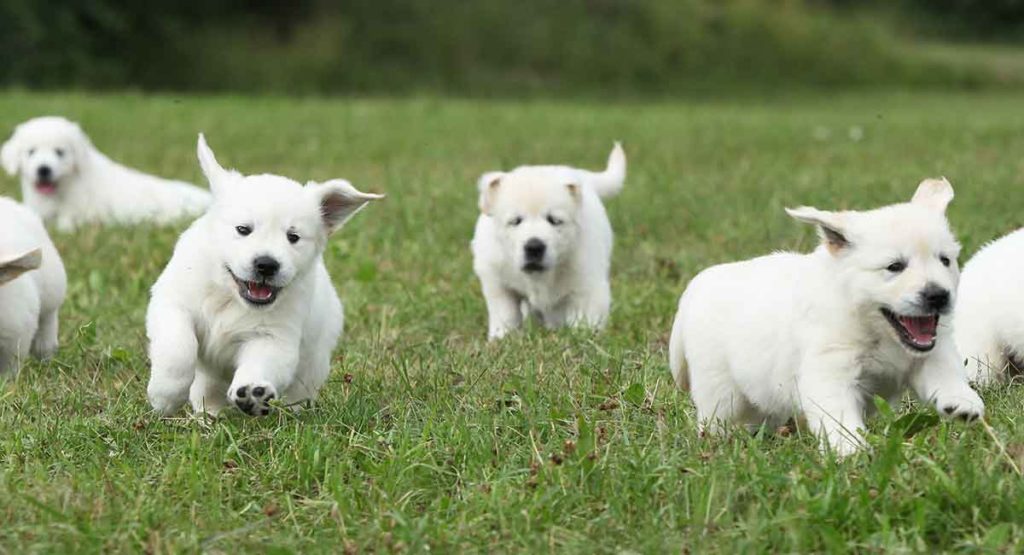
Their thick wavy coats range from deep fox red to fairest cream.
Whichever color you choose, bear in mind that their fur mops up mud and water like a sponge in winter, and sheds like crazy in summer.
Nonetheless, dog lovers keep falling for the placid and friendly charms of the Golden Retriever.
They’re genial, easily trained, and famously gentle with children.
But they also have a genetic predisposition to hip and elbow dysplasia, thyroid disease, and some cancers.
So choose a puppy from health tested parents to secure the longest, healthiest life possible for them.
2. Cream Labrador Retrievers
The Labrador Retriever needs no introduction.
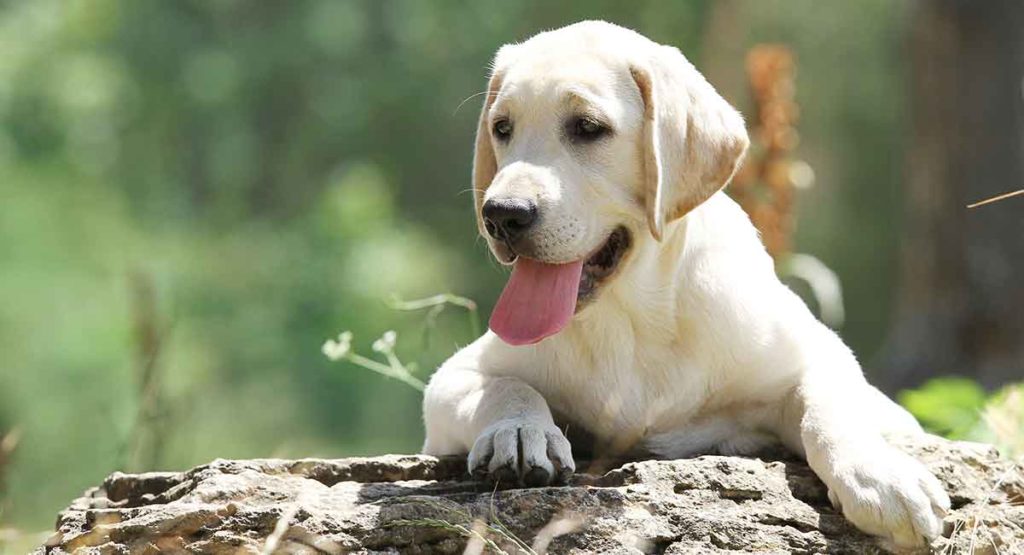
But if you’re more familiar with this pup in black or chocolate, then you might be surprised to discover they come in yellow as well.
Yellow is the third AKC recognized Labrador color, and yellow Labs vary from fox red to a pale buttery color.
Some yellow Labs also carry the controversial coat color dilution gene, which makes their coat a very pale cream color sometimes known as champagne.
Labradors are large dogs, which puts them at risk of joint disorders.
So breeding Labs must always be screened for hip, shoulder and elbow dysplasia, and growing puppies should be exercised wisely until their skeleton matures.
3. Cream Poodles
The color dilution gene which causes cream Labs is rare and controversial.
But the color dilution gene which causes cream Poodles is well known, popular, and even has a cute name – the chinchilla gene.
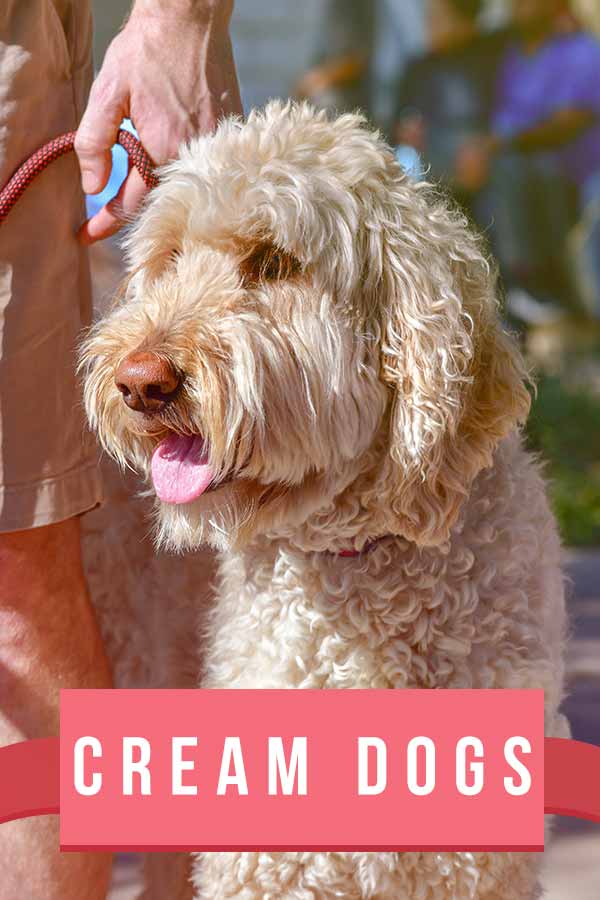
The chinchilla gene turns apricot (another popular Poodle color!) into softest cream, and it exists in all three sizes of Poodle: standard, miniature and toy.
Since Poodles come in three distinct sizes, it’s important to be clued up about the unique health and temperament of the one you’re most interested in.
For example Standard Poodles are more likely to experience hip dysplasia and bloat, whereas Miniature and Toy Poodles are more prone to slipping kneecaps and tooth decay.
All Poodle sizes are smart and energetic, but Standard and Miniature Poodles are arguably better suited to family life, since Toy Poodles are more fragile and easily injured.
4. Cream Dachshund Dogs
Dachshunds are famous for their unique sausage dog shape. Their coat can be long or short, and either length comes in cream.

Over the years, unwise attempts to see how long and low, the Dachshund body shape can get have put increasing numbers of these little dogs at risk of intervertebral disc disease in their spine.
So look for puppies with a less extreme body shape, and healthy parents.
Despite their popularity as companion dogs, Dachshunds also display some of the highest rates of owner- and stranger-directed aggression.
For the best chance of overcoming this, choose puppies from parents with great temperaments, and socialise them carefully and well before they turn 12 weeks old.
5. Cream Dogs: Chihuahua
The tiny Chihuahua is the quintessential toy dog.
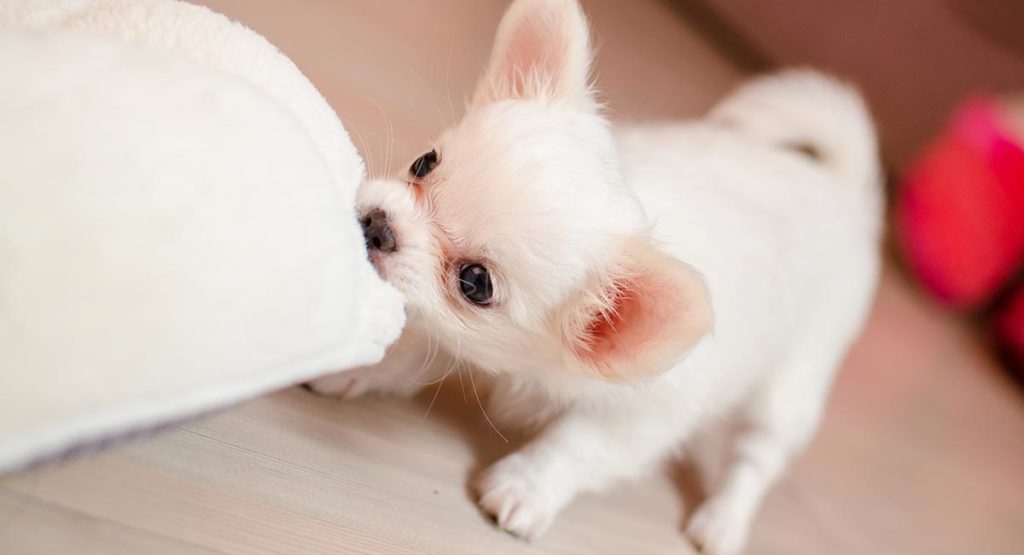
Lots of Chihuahua coat colors are accepted in the show ring, including cream.
These little pups have a plucky attitude befitting of a much larger dog, but they typically weigh less than seven pounds and stand less than eight inches tall.
They also live up to 20 years!
Their size comes with some drawbacks though. They are fragile and prone to injury, they are vulnerable to slipping kneecaps, and their teeth tend to get overcrowded, leading to tooth decay.
6. Pomeranian Dogs in Cream
Pomeranians are probably best known in red, which makes them look like very tiny plush foxes.

In fact, under that dense fluffy coat they’re no bigger than Chihuahuas!
But the breed standard places no restrictions or priorities on their coat color, and one of the lesser known colors is cream.
Pomeranians are feisty and fearless. Even though their short stature means they don’t need long walks, they still have lots of energy for playing games at home.
Look for cream colored puppies from parents tested for eye disease, heart disease and slipping kneecaps.
7. Bichon Frise
TheBichon Frise is another playful toy-sized dog.
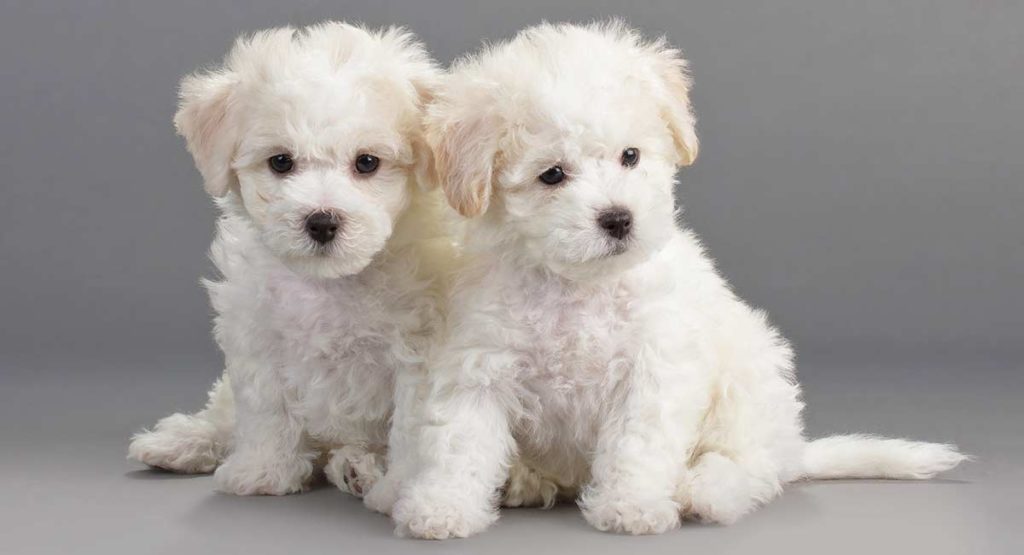
While their predominant color should be white, they’re allowed shadings of buff, cream or apricot around their face and ears.
These friendly little dogs were originally kept as lap dogs by members of the European nobility.
And they still thrive on having a close bond and lots of interaction with their family.
This means their best suited to households where someone can keep them company for most of the day, and they’re vulnerable to separation anxiety if they’re left alone for too long, too soon, as puppies.
Look for puppies from breeding lines tested for hip dysplasia, slipping kneecaps and eye disease.
Healthy Bichon Frises live around 13 years on average.
8. American Pitbull Terrier
Pitbulls carry a lot of historical baggage.
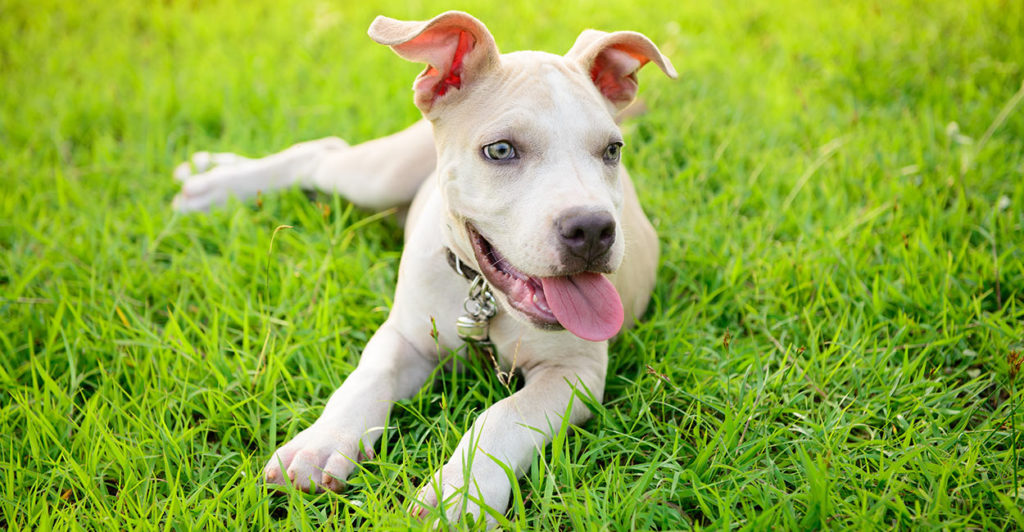
Once bred to take part in blood sports, some Pitbulls still display increased dog-directed aggression.
But a new generation of properly socialised Pitbulls from breeding lines with great temperaments are starting to gain attention for all the right reasons.
These dogs are lighthearted, clownish, and famously sweet and affectionate with their families.
They’re receptive to training, and enjoy solving puzzles and learning tricks, as well as plenty of exercise in the great outdoors.
Their short, neat coat comes in a wide range colors, but two of them – buckskin and fawn – look very creamy.
9.Samoyed Cream Dogs
Samoyedsare an ancient breed from Siberia.
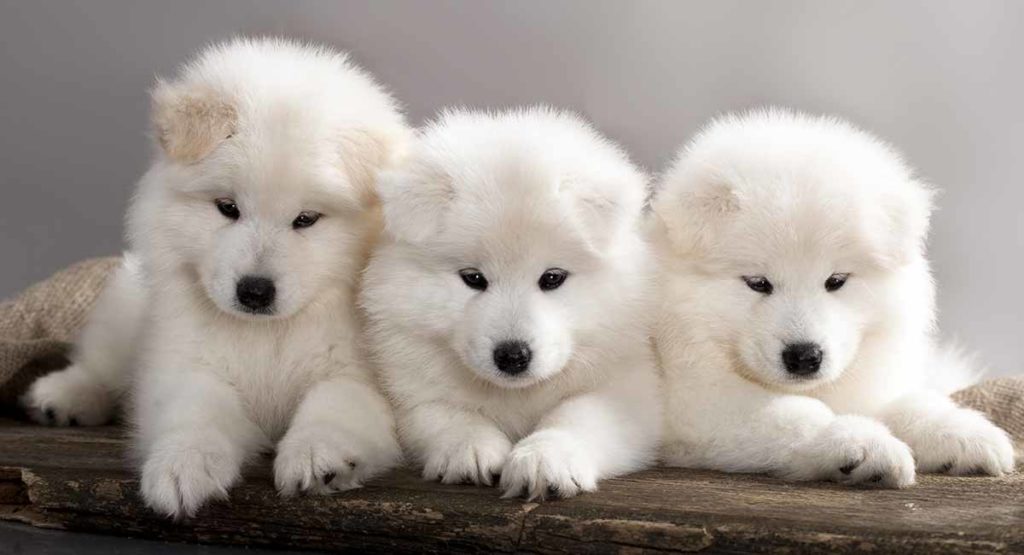
The nomadic peoples who founded the breed used them for hunting, sled pulling and herding. And even today one of the first words used to describe them is ‘adaptable’.
They have a thick coat to protect them from extreme cold, and a distinctive fluffy, upturned tail which arcs over their back.
They also have a distinctive upturned “smiling” mouth – possibly an adaptation to prevent drool which could freeze and damage the skin during a Siberian winter.
If you think the unmistakable Samoyed might be right for you, you’ll have to commit to giving them lots of exercise. These hard working dogs also love activities like agility trials.
Samoyeds are prone to an inflammatory skin condition called sebaceous adenitis – ask your breeder if they’ve had any experience of this in their dogs.
10. Bolognese Cream Dogs
Next from a very old dog, to one which is hoping to be the next new breed on the AKC register.
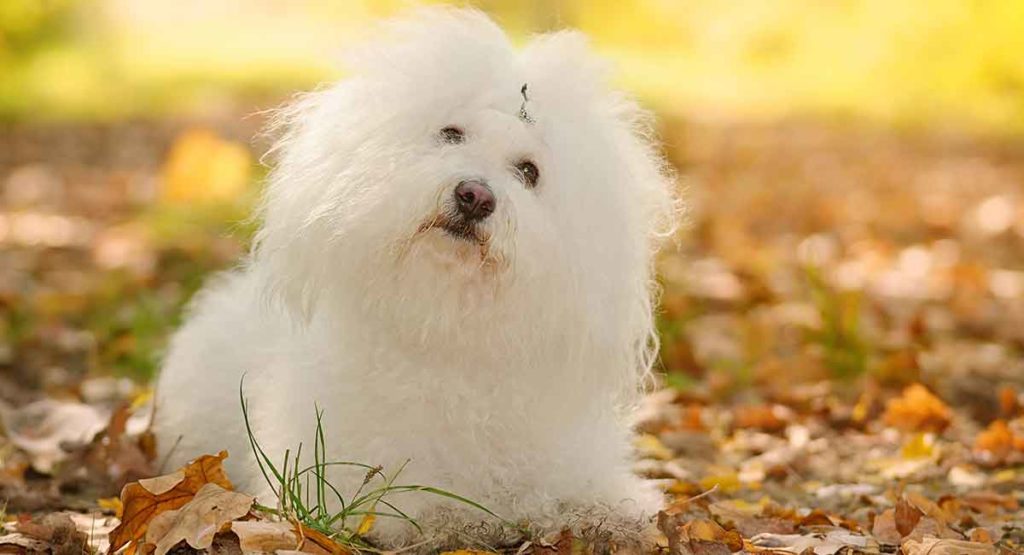
In fact curly coated Bolognese dogs have been popular companion dogs to the Italian aristocracy for at least 800 years, but in America they’re still part of the Foundation Stock Service.
They have creamy white hair which sheds very little.
In show dogs it’s allowed to grow out to its natural length, but lots of pet dogs are clipped for easier grooming.
Since they’re still unusual in many parts, if you’re looking for a Bolognese puppy, check that litters you meet have a low coefficient of inbreeding.
Small gene pools are a prime culprit for propagating genetic disorders.
11. Cream Saluki Dogs
Bolognese dogs have been cuddly and pampered pets for centuries. When it comes to looks, origin stories and temperament, Salukis couldn’t be more different!
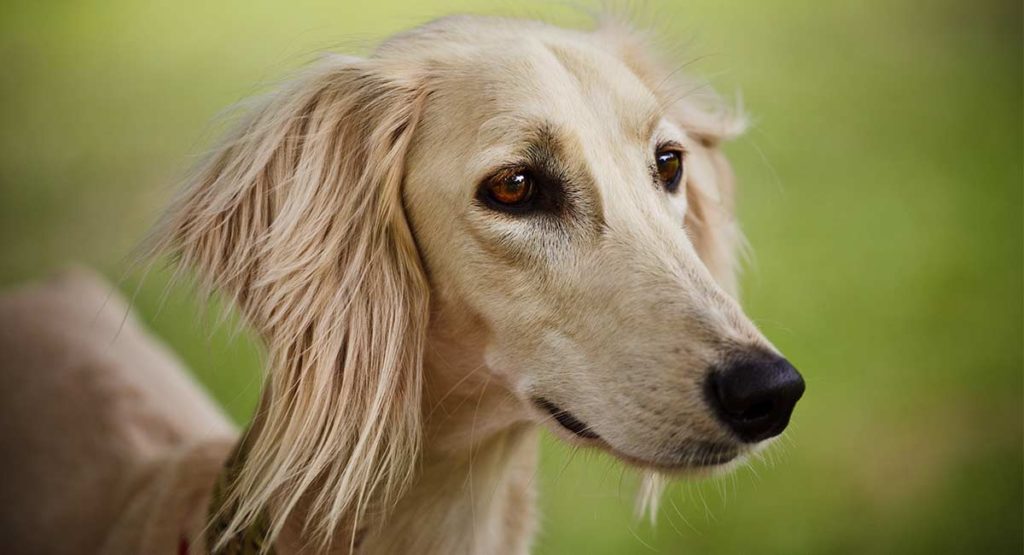
These sighthounds started out as hunting dogs in the Middle East. They are unbelievably fast, easily bored, super independent, and famously resistant to training.
They’re also beautiful, graceful and dignified. Owners love them because they deliver lots of personality and affection in a very pretty package.
Salukis can be cream, white, fawn, golden, red, tricolor, or a sable-type color brilliantly named ‘grizzle’.
They tend to be aloof around strangers, so they need lots of careful socialisation as puppies.
As well as fresh air and exercise, these dogs benefit from lots of puzzle toys and brain training exercises to keep them occupied.
12. Pekingese Dogs in Cream
Cream Pekingese dogs in full show-groom look rather like mobile footstools.

These toy dogs are short and stocky, with a flat muzzle and long bouffant hair which reaches the floor and completely obscures the shape of their body.
Despite being small, they’re not always well suited to apartment living – they tend to be very vocal and wary of strangers. They do make good little watch dogs though!
Due to their flat muzzles, Pekingese dogs are prone to brachycephalic airway syndrome and brachycephalic ocular syndrome.
For this reason, whilst cute and comical to look at, we think this cream dog breed is best overlooked.
13. Bedlington Terrier
Bedlington Terriers are another dog with a distinctive silhouette. But these practical pooches look like lambs instead of furniture!
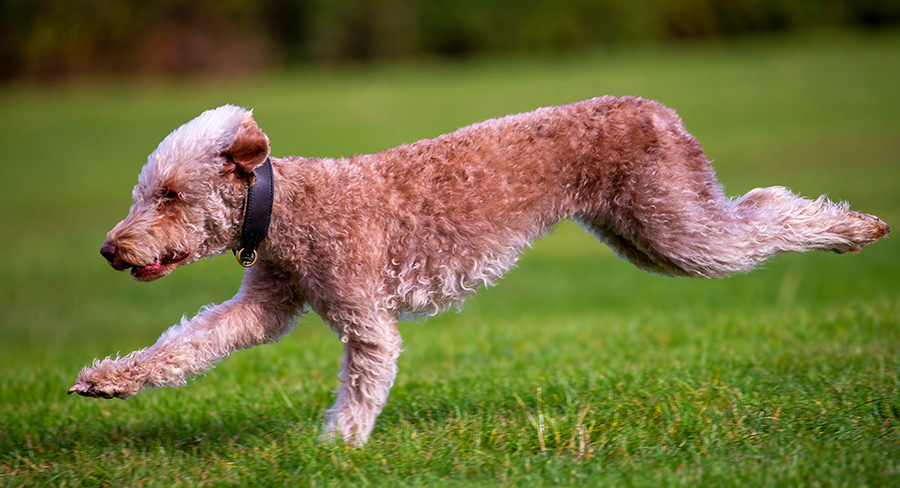
Bedlington Terriers are pretty unusual in the United States. In fact they’re even unusual in Northern England, where they originate from.
However, they’re worth considering if you’d like a cream terrier dog with a non-shedding coat.
Like all terriers, Bedlingtons need lots of exercise and interaction. Bored terriers tend to resort to unwanted behaviors like chewing and digging to occupy themselves.
But since Bedlingtons were historically valued as robust little working dogs, they also tend to be relatively free of hereditary health problems, and usually live well into their teens.
If you decide to look for a cream Bedlington, the color to search for is “sandy”.
14. Cream Cairn Terrier Dogs
Cairn Terriersare another rugged and functional little dog in a cream coat.

They were originally bred in Scotland to help flush foxes and other animals out of their underground homes.
And they still have a strong instinct to dig, which means these little dogs do best in homes with a big yard that you’re not precious about!
Cairns, and Cairn mixes, are little dogs who like to be around people and keep busy.
Provided you’re confident you can keep a Cairn Terrier occupied, you’ll never have to suffer a dull moment again.
15. Azawakh: The Rarest Cream Dogs
Finally, one of the most unusual cream dogs we could think of – the Azawakh.
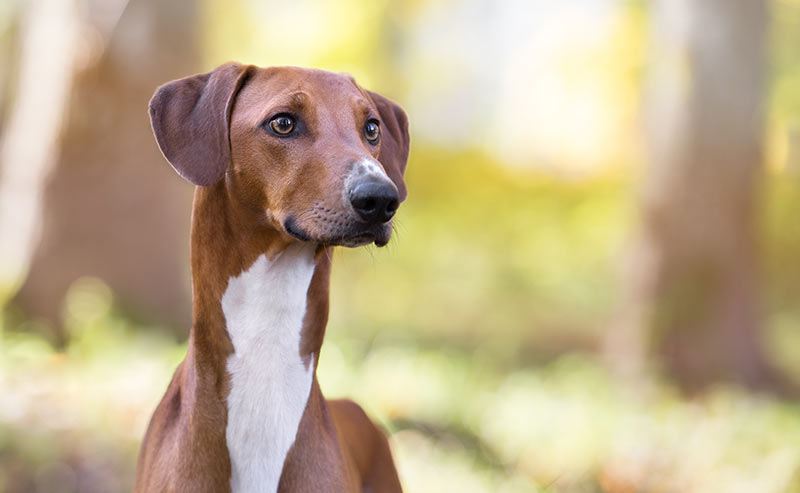
The Azawakh holds the curious distinction of being the dog with the fewest AKC registrations in 2018 (the most recent year for which records are available).
These long-legged African sighthounds were originally domesticated from semi-wild pariah dogs by nomadic tribes.
Today, modern Azawakhs are consummate hunting and guarding dogs.
They can be difficult to keep motivated during training, and they like a lot of space to run.
So these dogs are best suited to experienced dog owners in rural areas.
Cream Dogs
Cream dogs carry special genes which dilute the red pigment in their coat until it is barely perceptible.
Hopefully this article has shown you that there a cream dog breed for every kind of person!
Have you found the perfect cream dog for you? In fact are they already living in your home?
Let us know down in the comments box!
References and Resources
Adams et al, Methods and mortality results of a health survey of purebred dogs in the UK, Journal of Small Animal Practice, 2010.
Duffy, Breed differences in canine aggression, Applied Animal Behavior Science, 2008.
Cavanagh & Bell, Veterinary Medical Guide to Dog and Cat Breeds, CRC Press, 2012.
Orthopedic Foundation for Animals Canine Health Information Center
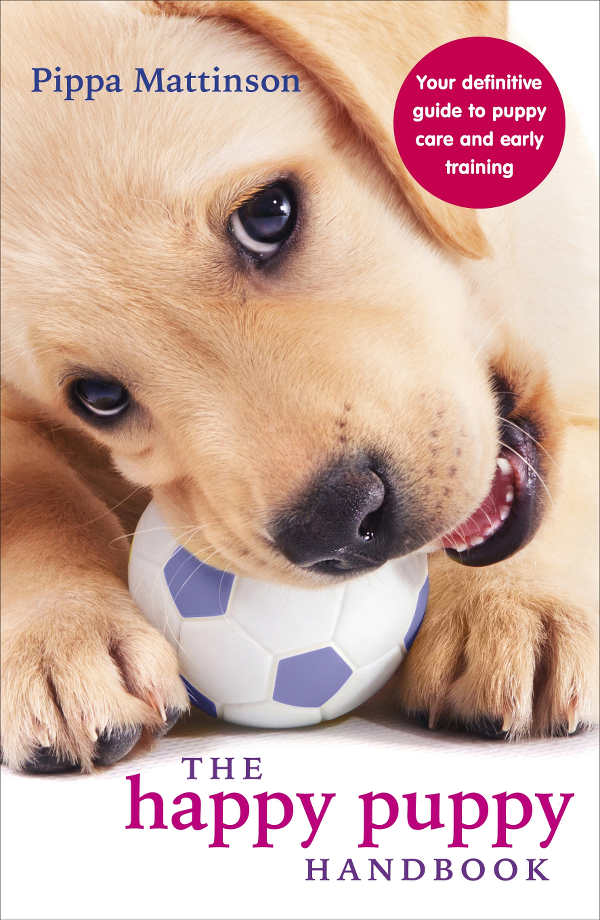
Leave a Reply